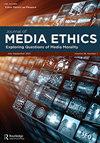The Ethics of Transparency: A Review of Corrections Language in International Journalistic Codes of Ethics
IF 1.1
3区 哲学
Q3 COMMUNICATION
引用次数: 2
Abstract
ABSTRACT Journalistic codes of ethics (N = 88) from 55 countries were analyzed for their discussions of errors and corrections. The sample includes codes from press councils, broadcast media outlets, newspapers, digital media outlets, radio stations and non-governmental organizations (NGOs). Overall, the codes were similar across countries. Most included a discussion of the error-correction process (the “how” of corrections), as well as an explanation of normative values (the “why” of corrections). Details regarding correction placement and speed were particularly common across codes. Results suggest codes that emphasize correcting harmful errors were slightly more common in the codes from countries with greater press freedom, and there was some indication that codes that provide cursory guidelines about corrections and accuracy were more likely to come from countries with less press freedom. Implications for journalists and media organizations are explored.透明伦理:国际新闻职业道德规范中的更正语言述评
摘要:本研究分析了55个国家88份新闻职业道德规范中关于错误和纠正的讨论。样本包括来自新闻委员会、广播媒体、报纸、数字媒体、广播电台和非政府组织(ngo)的代码。总的来说,各国的规范是相似的。大多数包括对错误纠正过程的讨论(“如何”纠正),以及对规范值的解释(“为什么”纠正)。关于纠错位置和速度的细节在代码中特别常见。结果表明,强调纠正有害错误的代码在新闻自由程度较高的国家的代码中更为常见,有一些迹象表明,对更正和准确性提供粗略指导的代码更有可能来自新闻自由程度较低的国家。对记者和媒体组织的影响进行了探讨。
本文章由计算机程序翻译,如有差异,请以英文原文为准。
求助全文
约1分钟内获得全文
求助全文

 求助内容:
求助内容: 应助结果提醒方式:
应助结果提醒方式:


